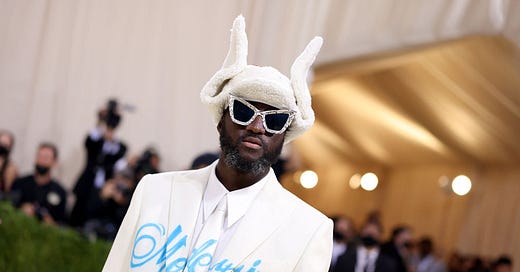Virgil Abloh, The Late Rockstar
In life and in death, the trailblazing Off-White founder’s career felt more like that of a superstar musician than a designer.
Your weekly dose of music, media & money. Click here for a full subscription.
Usually, when a fashion icon dies, the obituaries mention other designers they influenced. But when news of Abloh’s passing broke yesterday, remembrances mentioned names known primarily as musicians—Kanye West, Rihanna, A$AP Rocky—even more prominently than purveyors of couture.
Keep reading with a 7-day free trial
Subscribe to ZOGBLOG by Zack O'Malley Greenburg to keep reading this post and get 7 days of free access to the full post archives.





